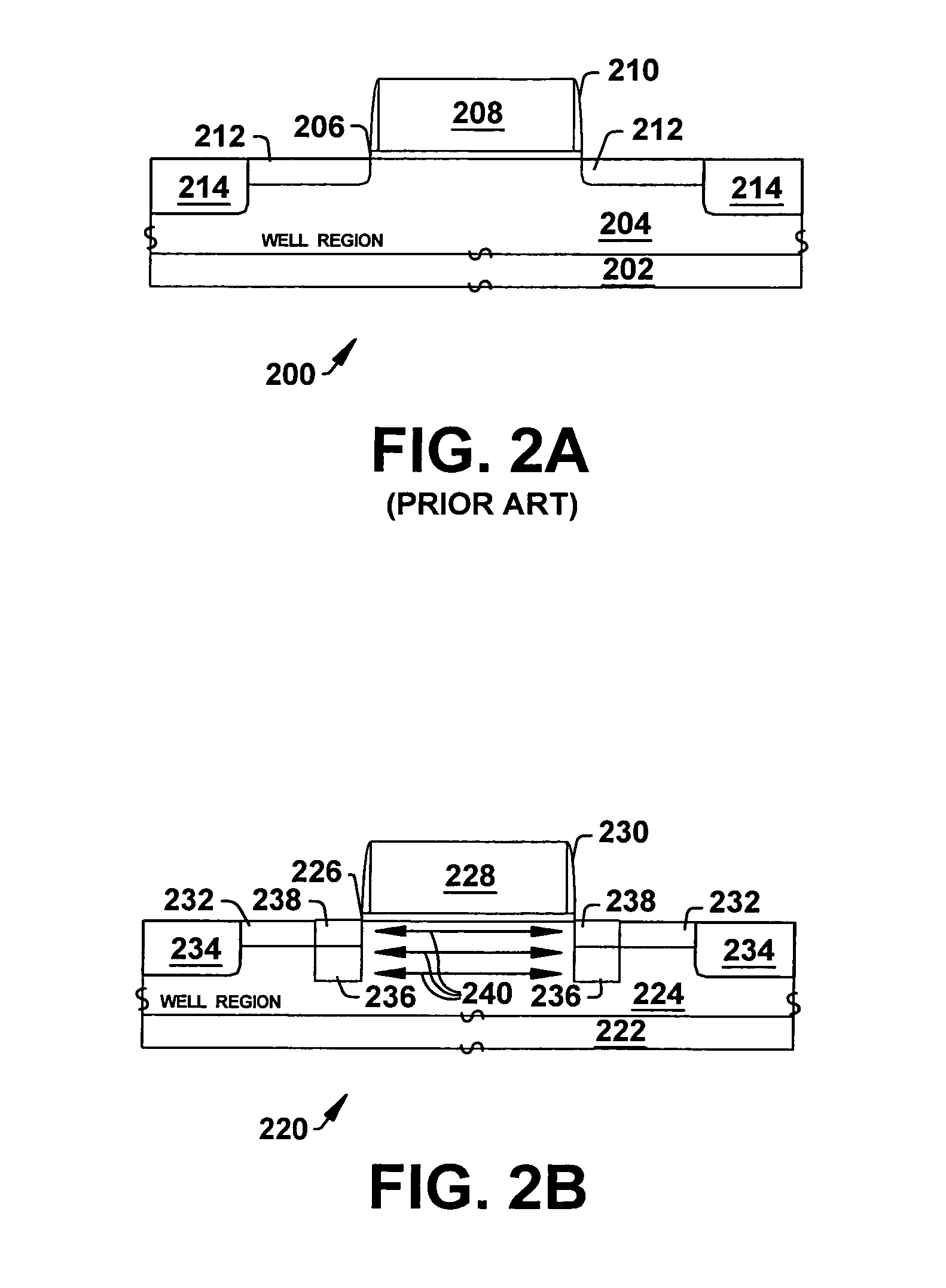Systems and methods for low leakage strained-channel transistor
a technology of strained channels and transistors, applied in the field of semiconductor devices, can solve the problems of affecting the mobility of other carriers, affecting the mobility of electrons, and affecting the mobility of holes, and achieve the effect of selectively applying strain to channel regions to facilitate semiconductor device fabrication
- Summary
- Abstract
- Description
- Claims
- Application Information
AI Technical Summary
Benefits of technology
Problems solved by technology
Method used
Image
Examples
Embodiment Construction
[0017]One or more implementations of the present invention will now be described with reference to the attached drawings, wherein like reference numerals are used to refer to like elements throughout, and wherein the illustrated structures are not necessarily drawn to scale. The invention provides transistor structures and methods in which transistor mobility is improved.
[0018]The present invention facilitates semiconductor device fabrication by inducing strain, relatively deeply, into channel regions of semiconductor devices. The present invention employs multiple recess structures that can have varied dopant type, dopant profile, and / or compositions in order to maintain or facilitate device operation while also selectively applying strain to channel regions. The multiple recess structures, by employment of strain inducing materials and dopant implanted, can apply strain to channel regions relatively deeply while mitigating leakage.
[0019]FIG. 1 is a flow diagram illustrating a meth...
PUM
 Login to View More
Login to View More Abstract
Description
Claims
Application Information
 Login to View More
Login to View More - R&D
- Intellectual Property
- Life Sciences
- Materials
- Tech Scout
- Unparalleled Data Quality
- Higher Quality Content
- 60% Fewer Hallucinations
Browse by: Latest US Patents, China's latest patents, Technical Efficacy Thesaurus, Application Domain, Technology Topic, Popular Technical Reports.
© 2025 PatSnap. All rights reserved.Legal|Privacy policy|Modern Slavery Act Transparency Statement|Sitemap|About US| Contact US: help@patsnap.com



